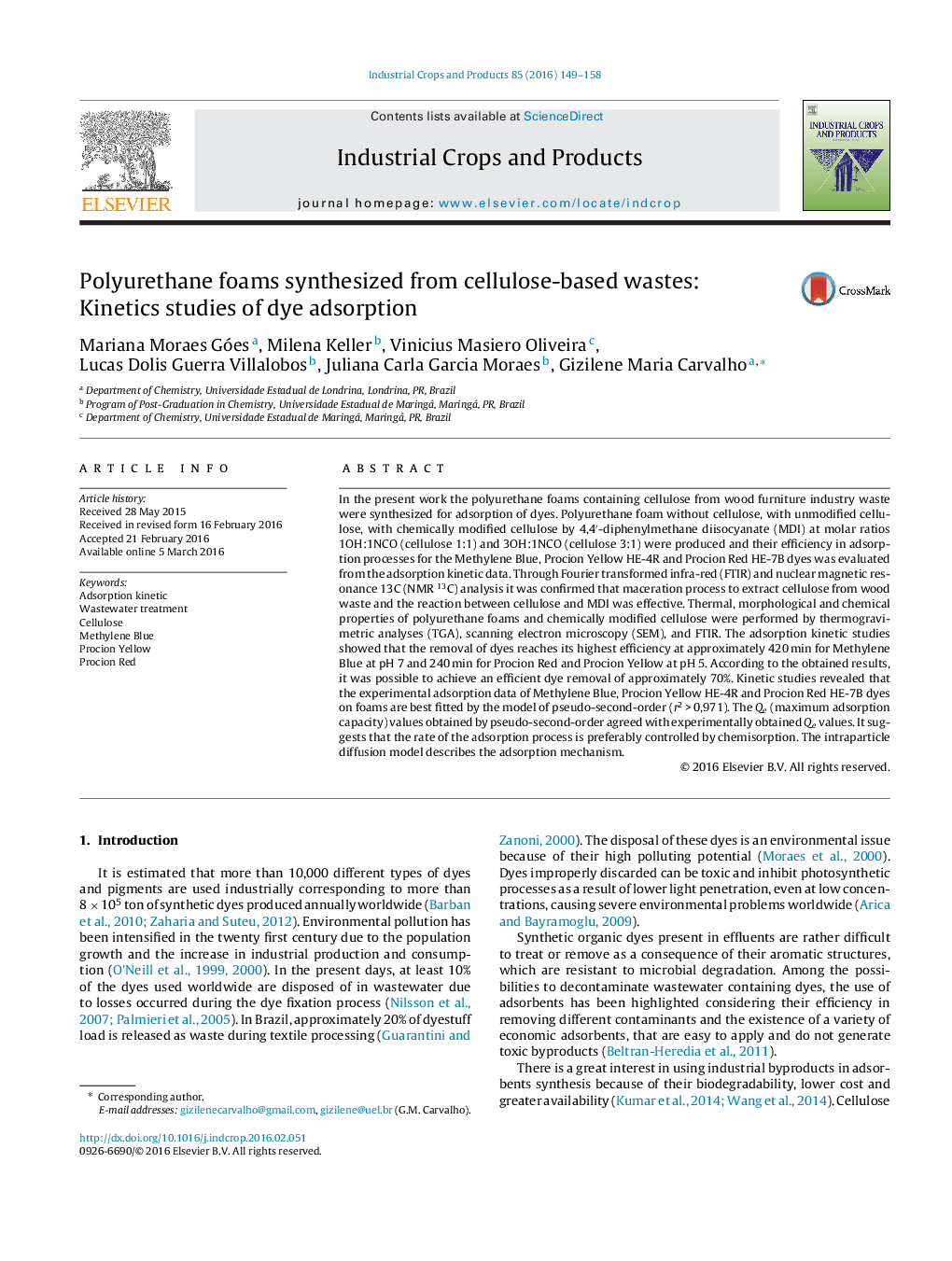| Article ID | Journal | Published Year | Pages | File Type |
|---|---|---|---|---|
| 4512501 | Industrial Crops and Products | 2016 | 10 Pages |
•High purity cellulose was obtained from wood residues using peracetic acid, an environmentally friendly reagent.•Polyurethane synthesized with cellulose from wood waste are a potential material to be used in the wastewater treatment.•Adsorption kinetic studies showed 70% of effectiveness in the removal process of the studied dyes.•The rate-limiting step in the overall sorption process was dependent of the structure and size of the dye.
In the present work the polyurethane foams containing cellulose from wood furniture industry waste were synthesized for adsorption of dyes. Polyurethane foam without cellulose, with unmodified cellulose, with chemically modified cellulose by 4,4′-diphenylmethane diisocyanate (MDI) at molar ratios 1OH:1NCO (cellulose 1:1) and 3OH:1NCO (cellulose 3:1) were produced and their efficiency in adsorption processes for the Methylene Blue, Procion Yellow HE-4R and Procion Red HE-7B dyes was evaluated from the adsorption kinetic data. Through Fourier transformed infra-red (FTIR) and nuclear magnetic resonance 13C (NMR 13C) analysis it was confirmed that maceration process to extract cellulose from wood waste and the reaction between cellulose and MDI was effective. Thermal, morphological and chemical properties of polyurethane foams and chemically modified cellulose were performed by thermogravimetric analyses (TGA), scanning electron microscopy (SEM), and FTIR. The adsorption kinetic studies showed that the removal of dyes reaches its highest efficiency at approximately 420 min for Methylene Blue at pH 7 and 240 min for Procion Red and Procion Yellow at pH 5. According to the obtained results, it was possible to achieve an efficient dye removal of approximately 70%. Kinetic studies revealed that the experimental adsorption data of Methylene Blue, Procion Yellow HE-4R and Procion Red HE-7B dyes on foams are best fitted by the model of pseudo-second-order (r2 > 0,971). The Qe (maximum adsorption capacity) values obtained by pseudo-second-order agreed with experimentally obtained Qe values. It suggests that the rate of the adsorption process is preferably controlled by chemisorption. The intraparticle diffusion model describes the adsorption mechanism.
